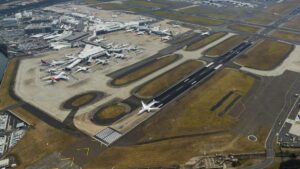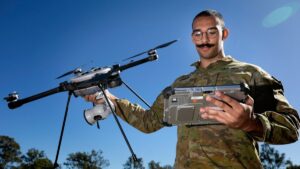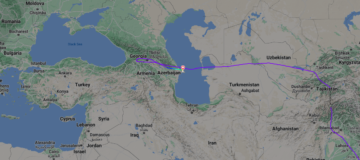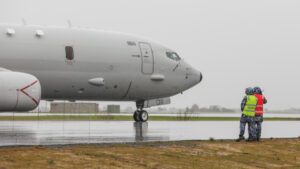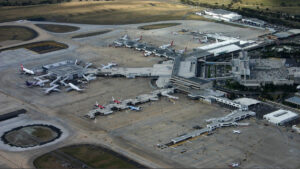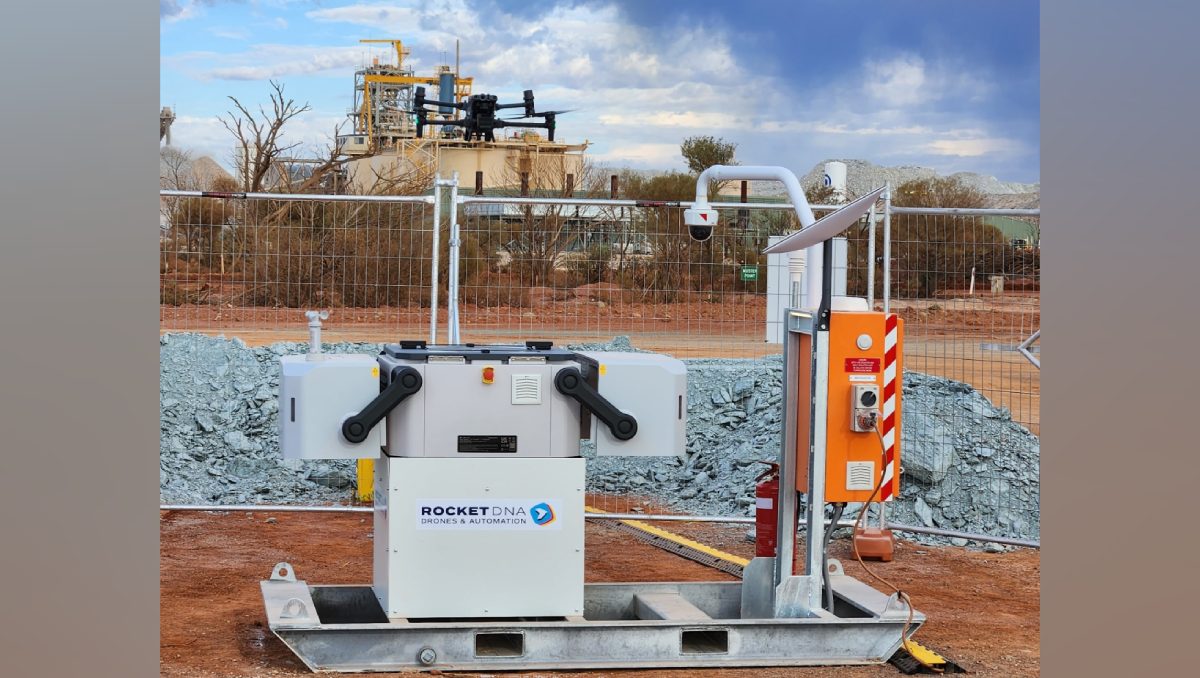
CASA has granted ‘beyond visual line of sight’ approval for a drone system that will automatically fly to examine unexpected power outages.
The authorisation covers RocketDNA’s X-Bot, which works with two autonomous drone docking systems, the DJI Dock System and the Hextronics Global drone station.
Drone operators in Australia are currently only allowed to fly drones that can be seen by a human pilot and require special authorisation from CASA to fly out of sight.
“One of the main issues with electricity outages, for example, is the fault can be difficult to locate, especially in remote areas where the fault may be a fallen tree over a powerline kilometres away from a road,” said RocketDNA CEO Christopher Clark.
“RocketDNA’s drones-in-a-box respond automatically when a fault occurs and can be used to identify the exact location and send the information back to the remote operating centre in a much more timely and efficient way.
“Rather than sending a human to complete certain tasks, or to respond to an emergency alarm which can be a potentially life-threatening situation, our autonomous drone systems can be pre-programmed or triggered to identify the issue, thus creating safer and more sustainable work environments.
“This could be identifying faults on pipelines and conveyor belts, corrosion, overheating and defect detection of critical energy infrastructure, to full emergency response.
PROMOTED CONTENT
“Our autonomous flight footage and remote detection plus AI overlay is recorded and live-streamed in real-time, helping organisations simply and urgently determine the issue and the appropriate level of response.”
RocketDNA is the first Australian company to secure approval for the DJI Dock System following almost a year of work with CASA, including the development of safety protocols and a suite of policies and procedures, as well as a practical demonstration.
“This approval ushers in a new era of data collection applications that can be conducted remotely and marks the initiation of autonomous flights seamlessly integrated into existing operations,” Clark said.
“We have already deployed our first DJI Dock to a customer site (gold mine) in Western Australia, where the team will begin implementing autonomous flights into existing operations.”
The full X-Bot product is assembled in Australia. The system is approximately the size of two pallets, weighs just 100 kilograms and can easily be moved from location to location depending on requirements.
The DJI drones have a 7-kilometre range and can be deployed as part of a network to cover large areas.
- SEO Powered Content & PR Distribution. Get Amplified Today.
- PlatoData.Network Vertical Generative Ai. Empower Yourself. Access Here.
- PlatoAiStream. Web3 Intelligence. Knowledge Amplified. Access Here.
- PlatoESG. Carbon, CleanTech, Energy, Environment, Solar, Waste Management. Access Here.
- PlatoHealth. Biotech and Clinical Trials Intelligence. Access Here.
- Source: https://australianaviation.com.au/2023/10/casa-approves-drone-that-examines-power-outages/
- :has
- :is
- :where
- 100
- 91
- a
- AI
- alarm
- allowed
- almost
- already
- an
- and
- applications
- appropriate
- approval
- approximately
- ARE
- areas
- AS
- assembled
- Australia
- Australian
- Australian company
- authorisation
- automatically
- autonomous
- away
- back
- BE
- begin
- by
- CAN
- Casa
- centre
- ceo
- certain
- Christopher
- collection
- company
- complete
- conducted
- corrosion
- could
- cover
- covers
- Creating
- critical
- Currently
- customer
- data
- Depending
- deployed
- Detection
- Determine
- Development
- difficult
- DJI
- Dock
- drone
- Drones
- easily
- efficient
- electricity
- emergency
- energy
- environments
- Era
- especially
- examine
- Examines
- example
- existing
- Fallen
- faults
- First
- flight
- Flights
- following
- For
- from
- full
- Global
- Gold
- granted
- Have
- helping
- HTTPS
- human
- identify
- identifying
- implementing
- in
- Including
- information
- Infrastructure
- integrated
- into
- issue
- issues
- jpg
- just
- large
- Level
- Line
- location
- Main
- May..
- mine
- more
- moved
- much
- network
- New
- of
- on
- only
- operating
- Operations
- operators
- or
- Organisations
- our
- out
- Outages
- over
- part
- pilot
- plato
- Plato Data Intelligence
- PlatoData
- plus
- policies
- potentially
- power
- Practical
- procedures
- Product
- protocols
- range
- real-time
- recorded
- remote
- require
- Requirements
- Respond
- response
- road
- safer
- Safety
- Said
- seamlessly
- secure
- seen
- send
- sending
- Sight
- simply
- site
- situation
- Size
- special
- station
- suite
- sustainable
- system
- Systems
- tasks
- team
- than
- that
- The
- the information
- Thus
- timely
- to
- tree
- triggered
- two
- Unexpected
- used
- ushers
- Way..
- weighs
- WELL
- Western
- when
- which
- will
- with
- Work
- works
- year
- zephyrnet


